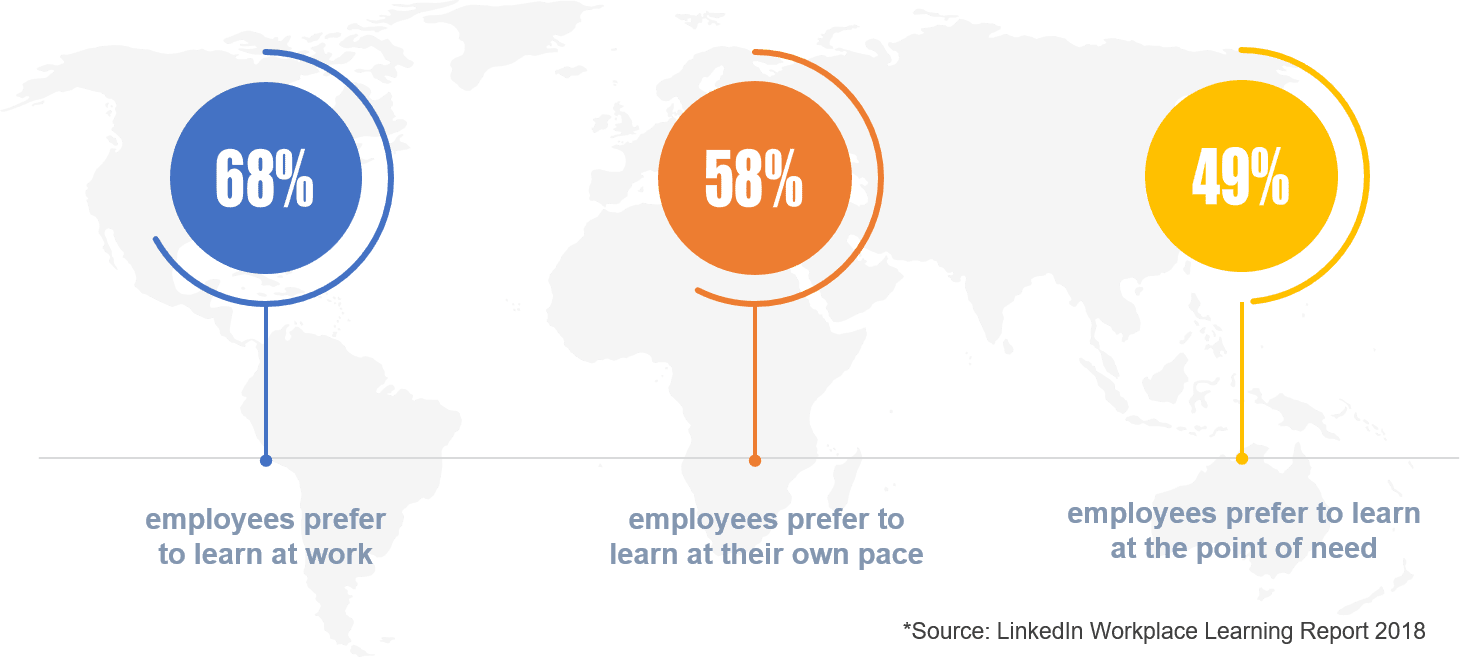We believe that the future classroom training will focus more on practical exercises and experiential activities
With the rise of low-cost and learning-on-demand digital learning, the traditional classroom training for masses is expected to decrease. It is estimated that future classroom training will be reserved for skills practice and experiential activities, while online forms will be used for theories learning. It is possible that the classroom training will be mainly used for elites in the organization, such as executives and high-potential talents, regarding topics that require real-time interpersonal interaction to obtain higher returns on training investments.
Blended learning (online & offline) becomes an irreversible trend
With the current global development trend in the background, we’ve notice that digital learning is growing, and believe that its growth would be unprecedented.
*Source: LinkedIn Workplace Learning Report 2018
With that being said, we still believe that the traditional face-to-face training is essential, especially for those who need skills practice and instant feedback, mindset change and experiential learning. The best way to achieve this goal is the blended learning method:
• Theories learning: digital online learning
• Skills practice and instant feedback, mindset change and experiential learning: face-to-face offline learning
The status quo and future development trend of enterprise digital learning
•More learning resources and training forms
•More efficient and world-leading learning resources developed by experts around the world simultaneously
•Engaging interactive learning mode allows trainees to collaborate efficiently
•Visualized and easy-to-manage learning data allows managers to make accurate teaching decisions at any time
•Intelligent operation driven by AI and culture-based innovative content
Increasing expectation on L&D to support business transformation
The senior executives are increasing their expectations on Learning and Development (L&D) function to support business transformation. According to McKinsey's “L&D” theory, L&D leaders must embrace a broader role within the organization and formulate an ambitious vision for the function. An essential area in L&D is to develop people capabilities. The increase in intensity and complexity of competition and the expansion of digital revolution have imposed higher expectation that L&D could quickly and massively improve the skills of more than just one generation of employees.
An effective tool to realize digital transformation - Skillsoft
Tools are critical for L&D professionals to support the transformation and adapt to future learning trends. The tools so enabled must have the following features to be effective:
• Diverse contents: They should contain diverse contents to meet the widespread needs of employees.
• Engaging formats: Provide diverse engaging formats to attract and encourage learners, e.g. scenario-based training, audiobook, reading, and skills practice. Also, game elements should also be introduced to make learning more fun!
• Easy-to-consume learning management system: The learning management system doesn’t require high technical skills to operate, and L&D professionals should be able to access what they want within a few seconds.
• Customized learning path: Especially regarding key business skills of the organization.
Click Free Access to our digital learning platform to meet your needs.




